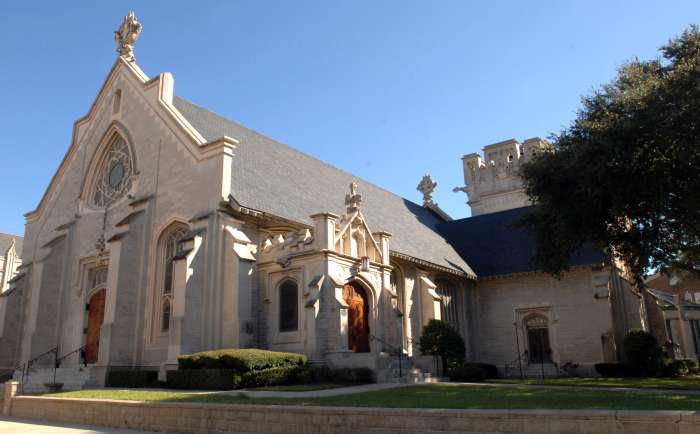In the 1960’s, residents of Jacksonville, FL decamped to suburban homes but the Episcopal Cathedral stayed where it had always been near the city center. Home to five historic churches: Immaculate Conception Catholic Church, Historic Mt. Zion AME Church, First United Methodist Church, First Presbyterian Church and the Episcopal cathedral, this area is known as the Cathedral District.
And now, the Episcopal Cathedral is taking the lead in trying to revitalize the district;
“St. John’s Cathedral officials have tried for years to improve the district for residents, and they took the next step April 21 when leaders at the cornerstone Episcopal church voted to form a for-profit corporation solely focused on development in the Cathedral District.
…In January, the church commissioned a study from the Urban Land Institute North Florida to look at what needs to be done to grow the district’s population and businesses.
The first step, the study said, was to create a community advocacy association and bring together a unified voice for the churches, non-profits, businesses and residents.
“I’ve been here for 7 years, and it seemed we couldn’t get the ball rolling,” [the Very Rev. Kate Moorehead, dean of the church since 2009] said, but with a for-profit dedicated to the issue, she said re-development should have a better chance. “Now that we have the vision, it’s just a matter of raising the funds.”
With that organization, the district can court new businesses and residential developers, the study said. Right now, the district features a 51-unit townhouse project, the Parks at the Cathedral, built in a partnership between the city, St. John’s Cathedral and a bank.
One of St. John’s Cathedral’s non-profits also runs about 750 rent-subsidized apartments for the elderly in three buildings.
The district houses many non-profits, including the Sulzbacher Center for the Homeless, but few businesses. The study said the area needs to do more to attract for-profit businesses to diversify district offerings.
In the meantime, the district’s vacant properties and empty parking lots could be better used by housing gathering places for food trucks, a community garden or weekly farmers’ markets, the report said.”

